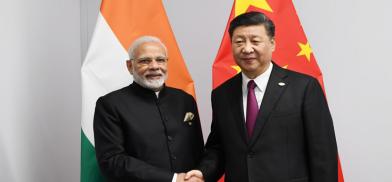Chinese investments in non-sensitive sectors should be incentivised
India’s defensiveness about Chinese FDI has parallels with trade. India Inc. has always been somewhat apprehensive of trading with the dragon as its pricing mechanism is opaque with hidden subsidies and an undervalued yuan, writes N Chandra Mohan for South Asia Monitor

India’s policy regime for FDI was tweaked to prevent “opportunistic takeovers” of firms while it battles a COVID-19 pandemic amidst a sharp economic slowdown, if not recession. The target unmistakably was China in Press Note 3 of 2020 issued by the Department for Promotion of Industry and Internal Trade on April 18 that mandated all investments from neighbouring countries that share a land border with India would require the government’s approval. The warrant for this defensive measure is not obvious apart from the official response that even developed countries like Germany, Italy, Spain, and Australia were scrutinizing Chinese investments.
A proximate trigger was the People’s Bank of China purchasing 17.5 million shares worth INR 30 billion in the Housing and Development Finance Corporation (HDFC) which would take its stake above 1 percent. This was hardly an “opportunistic takeover” by any stretch of the imagination. Not surprisingly, the Chinese embassy reacted to the Indian government’s move stating it violated the World Trade Organisation’s principle of non-discrimination and hoped that New Delhi would treat investments from different countries equally. India, in turn, responded that China has no cause for worry as the “procedural change” doesn’t bar its investments.
India’s defensiveness about Chinese FDI has parallels with trade. India Inc. has always been somewhat apprehensive of trading with the dragon as its pricing mechanism is opaque with hidden subsidies and an undervalued yuan. This translates into a targeted surge of Chinese goods into the country, resulting in huge trade surpluses year after year. The fact China can inundate our domestic market with cheaper steel, chemicals and electrical goods thanks to surplus capacities is a major reason why India opted out of the Regional Comprehensive Economic Partnership. The unequal and asymmetric nature of the bilateral engagement now extends to investments.
Perhaps there is also a realisation that China has made huge investments that are multiples of what registers on DPIIT’s (Department for Promotion of Industry and Internal Trade) database of foreign equity inflows. A ballpark estimate of Chinese FDI in India is USD 31 billion till 2019, according to American Enterprise Institute’s China Global investment tracker that registers individual transactions of USD 100 million-plus. In sharp contrast, official estimates show inflows that are 13-times lower at USD 2.3 billion till 2019. Chinese investors have had success in renewable energy and assembling smartphones in the country. Around 18 out of the 23 Indian unicorns -- start-ups with a valuation of over USD 1 billion -- have also tapped Chinese finance.
When global auto giants such as General Motors (GM) and Volkswagen Group’s MAN trucks have left the Indian market, China’s auto firms have seized the opportunity to enter. SAIC Motor Corp, which acquired a 50 percent stake in GM India in December 2009, is one such company.
Its subsidiary, MG Motors India has taken over GM’s car facility in Gujarat and has launched SUV models in the domestic market. While much of this story of Chinese investment is positive, the flipside is that they were less relatively successful with big-ticket green-field investments in industrial parks and real-estate development in Gujarat, Maharashtra and Haryana.
Interdependencies
Clearly, such investments have created interdependencies within the Indian economy. Fresh proposals should accordingly be welcomed rather than subject to case-by-case government approval. Such investments are also a win-win situation for Make in India: China has resources while we have the requirement. For such reasons, a slight rethink on the Indian government’s part was signaled when it indicated plans to fast-track the review of some investment proposals from China – with possible approval timelines of seven days to four weeks-- following concerns that its new screening rules could hit plans of companies, according to Reuters.
That said, there is definitely a case for tracking such investments and why they do not register in official databases. Smartphone manufacturer Xiaomi thus has big investments but they do not figure in AEI’s global investment tracker. Last year, it opened its seventh factory and announced USD 504 million of investments. This was made in March 2019 from Xiaomi Singapore Pte Ltd, according to the Delhi-based Institute for Studies in Industrial Development. The Securities and Exchange Board of India has written to custodians seeking the information as to whether funds that are being routed through tax havens like the Cayman Islands and Singapore into India has Chinese investors as the ultimate beneficial owners.
But while this exercise goes on, more investments in the pipeline from China should be incentivized if they are flowing into non-sensitive sectors. Not so long ago, attracting Chinese investments was considered desirable even by the government’s official think-tank Niti Aayog as it ran out of surplus labour and wages rose rapidly. Its labor-intensive industries like textiles shifted to lower-wage economies like Vietnam and Bangladesh.
This still remains a huge opportunity that could be leveraged by India, especially if it built Shenzhen-like free trade zones along its coastline.
(The writer is an economics and business commentator based in New Delhi. The views expressed are personal. He can be contacted at nchandrmohan@rediffmail.com)









Post a Comment